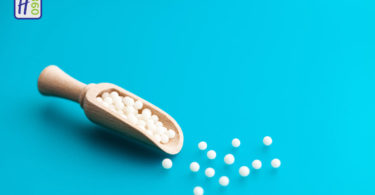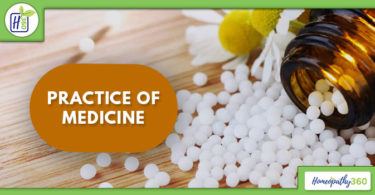Author:
Dr Vishnu T M
Assistant Professor, Dept. of Anatomy,
Yenepoya Homoeopathic Medical College and Hospital
Naringana, Mangalore
Karnataka
Calcaneal spur is a spike of bone at the anterior edge of the calcaneal tuberosity (usually medial). It may be seen on the posterior aspect of calcaneum1. On the plantar aspect of the calcaneus at the attachment of the plantar aponeurosis, a bony prominence may develop and points distally. It is generally thought to develop because of traction on the periosteum with consequent sub periosteal ossification.2 Calcaneal spur is one of the common problems facing the adult population. Almost 80% of the adult population is affected with calcaneal spur, but almost 20% of them are asymptomatic. This condition can also be associated with osteoarthritis, rheumatoid arthritis, poor circulation of the blood and other degenerative diseases. Both men and women are affected by this problem but mostly it affects female in the ratio of 2:1.3 This disease usually progresses gradually.
There are many so-called surgical conditions which are really medical conditions where surgery should be incidental. So, being a Homoeopath it is our prime duty to differentiate real surgical conditions from that of non-surgical conditions.
In aphorisms 185 and 186, Dr Hahnemann had discussed about the treatment and line of management of surgical diseases. Hahnemann concludes that “no external malady (not occasioned by some important injury from without) can arise, persist or even grow worse without some internal cause, without the cooperation of the whole organism which must consequently be in a diseased state.” Therefore the treatment of all affections must consist in the selection administration of a remedy which must be homoeopathic not only to the character of those local affections but also to the totality of symptoms which the patient present – in which case the general morbid state of the body is removed along with the local affection proving the local affection should be regarded as an inseparable part of the whole, as one of the most considerable and striking symptoms of the whole disease.4
One of such conditions is Calcaneal Spur, for which surgical line of management and palliation is the usual worldwide procedures in modern medicine. But only when conservative management fails, which occurs in approximately 10% of patients, surgical options should be considered. Symptoms should be present for more than 6 months before surgery should be discussed. With the Homoeopathic intervention, the surgery may become unnecessary and the bad effects of palliative treatment can be avoided in Calcaneal Spur. Coming to the homoeopathic mode of treatment, we find a large number of medicines, for this condition. The development of a logical plan of therapy for persons with this condition demands a good understanding of clinical characteristics of this disorder and good clinical judgment and also knowledge about homoeopathic therapeutics, selection of potency, dose and repetition.
Miasmatic Approach Of Calcaneal Spur (Fundamental Cause):
In the § 80 Dr Hahnemann says, “The monstrous internal chronic miasm- the psora, the only real fundamental cause and producer of innumerable forms of disease. We can confine the Fundamental cause for calcaneal spur also as Psora.5
The renowned Mexican homeopath F. Ortega put forward his concept of miasm. He maintained the concept of Hahnemann’s original three miasms However he attempted to make a clear and simple delineation of the mental and physical characteristics of each miasm, He described the main characteristics of the three constitutions in this way Psora: inhibition; Sycosis: excess; Syphilis: destruction.6
There are many diseases which can be removed or cured by surgical innervations alone and calcaneal spur is one among them. Homoeopathy is the system of medicine where many cases which require surgery can be treated without the knife disturbing the skin.
Homoeopathy has got a very good scope in treating calcaneal spur as Dr.Hahnemann himself has mentioned in his Aphorism 186, that for the cases of injury accruing to the body from without, the treatment of such disease is relegated to surgery; but in such injuries the whole living organism requires, as it always does active dynamic and to put it in a position to accomplish the work of healing.5
Calcaneal spur syndrome is a chronic disease with insidious onset and slow progress. In this chronic disease we can see that the underlying pathology occurs in the weight bearing areas. Calcaneal spur is the spike of bone at the anterior edge of the calcaneal tuberosity (usually medial).7 The spur is not a growth but a reaction to the local inflammation of the plantar fascia and ligaments due to repeated minor trauma or injuries to the fascia with deposition of calcium at the site of the ligamentous attachments.8
The pathology in the disease progression of this condition clearly point out to the psora to sycotic miasm, along with a syphilitic tendency, which has similar pathology running through its course.
While going through the clinical manifestations of calcaneal spur syndrome, would come across common symptoms like heel pain worse by motion, standing and pain in the morning and better by rest which clearly points out the psoric miasm. Psora mainly acts in the inflammatory stage of disease.
According to Subrata Kumar Banerjea, “HYPERS” are sycotic. Hyperplasia and hypertrophy comes under sycotic. Exaggerations or excess and over nourished are also included under sycosis.9At the same time symptoms like heel pain worse in the first movement and better by continued motion and worse by cold are suggestive of the sycotic miasm. The sycotic will typically wrap him in a thick layer of fat and obesity is one of the predisposing causes for calcaneal spur. One of the causes of calcaneal spur is repeated minor trauma or injuries to fascia which causes degeneration of fascia which comes under syphilitic miasm.By considering this, it can be said that the miasmatic cause for Calcaneal Spur is Syco-syphilitic on Psoric background.9
REFERENCES
- Canale & Beaty, Campbell’s Operative Orthopaedics, 11th Edition, Elsevier
- H. Robert Brashear and R. Beverly Raney, Shand’s Handbook of Orthopaedic Surgery, 9th Edition, Page No.424-427.
- Samuel .L. Turek, Orthopaedics – Principles & Their Application, Vol 2, Lippincott-Raven Publishers, Philadelphia. Newyork. Indian Edition Distributed in India by JayPee Brothers Medical Publishers (P) Ltd.- Page no-1472.
- Sarkar. B.K, Hahnemann’s Organon of medicine with an Introduction and Commentary on text, 8th Indian edition, Reprint 1987, M. Bhattacharyya & Co Pvt. Ltd, Calcutta, Page 336, 337, 369 to 371.
- Samuel Hahnemann, Organon of medicine, 6th edition, Reprint 1998, B. Jain Publishers Pvt. Ltd, Page 3, 4, 5, 7, 8 to 11, 85 to 88, 94-98, 159,160, 166 to 170,232, 233,245, 273 to 287.
- http://www.Homeopathyplanet.com/audesapere/study%20room/library/miasms/librarymiasmsmorrison.htm
- Ebenezer john, (2006), Text book of orthopedics, 3rd edition, jaypee brothers medical publishers (p) ltd, emca house, 23/23B, ansari road, daryaganj, new delhi-110002, India.-Page no-401 & 402.
- Natarajan .M & Mayilvahanam natarajan (2003), Text Book of Orthopedics and Traumatology, revised 5th edition, M.N. Orthopedic hospital, Banic street, Chennai-6000010, Tamilnadu, India. -Page no-142.
- Subrath Kumar Banerjee, Miasmatic Prescribing, 2nd extended edition, , B. Jain publishers, New Delhi, India, 2006, Page No: 1-14,30-32 130-135,168,169,171,181,236-239.





